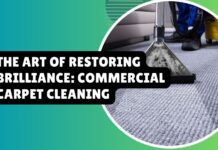Whether it’s a leaky pipe or a flood, water in unwanted areas can lead to substantial damage. Of course, it can destroy your possessions, but it can ideally lead to compromised air quality, mold growth and even compromise the structural integrity of your house.
To avoid things like mold growth, it is imperative to remove the water and dry out all the affected places as soon as possible. Preventing mold growth is crucial in keeping your indoor air clean and healthy. Whether you are dealing with a few damp areas, or your basement is filled up to two inches by water, here are a few tips to deal with water damage or compeltly skip this article if you have insurance, call your nearest restoration company like Chicago Restoration Pro and have them come and take care of it.
Disconnect Power Supply, Remove Appliances, Furniture and all Movable Items
The faster you remove these items, the higher the chances of saving them from damage. If possible, disconnect the power supply, particularly if water goes above the electrical outlets. Remove all carpets and underpadding. It’s possible to save the carpet by cleaning and disinfecting, but it is highly unlikely to save the underpadding as it absorbs a lot of water.
Remove The Water
Removing all the water as fast as possible and drying the area completely are the primary tasks when it comes to dealing with water damage. There are various ways of removing standing water. If your house does not have power, or loose wires will be problematic, then use the traditional, manual method. Use mops, buckets and old towels. Pour the water in down the drain, lawn or other permeable surfaces.
You can also use a wet/dry vacuum, but ensure you plug into an outlet far away from the water. Another option is to lease a generator and a sump pump to clear the water relatively fast.
Dry Out The Affected Places
It is ideally imperative that you dry out the affected place as soon as possible. Utilize fans and a dehumidifier. You should also open the windows if the outdoor humidity is low. If the affected area is a finished basement and the drywall has also been affected, you’ll want to cut away the spots touched by water. That’s because the drywall will crumble and paper backing is a good habitat for mold.
Disinfect
After completely drying out the area, the next step is to use a disinfectant to kill any bacteria that may have come through toilets or sewers. Disinfect all spots affected by the waters including walls and non-upholstered furniture. Avoid using bleach as it has harmful fumes and does not kill mold spores. Instead, use EPA-registered mold disinfectants.
Get Rid of Damaged Items Responsibly
You might be tempted to just throw every damaged item into a dumpster, but organizing damaged items into piles and sending off what’s possible to recycling centers will help reduce pressure on the local landfill. You can visit your city or town’s management website and check where to recycle old adhesives, paints, damaged furniture, electronics and the likes.
So there you have it, a few simple tips on what to do when you have water damage in your home.





















